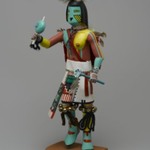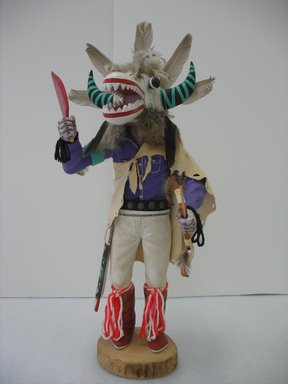

Henry Shelton (1929–2016). Kachina Doll (Nataoska), 1960–1970. Wood, paint, hide, feathers, fur, yarn, silver, wool or cotton, 22 × 9 1/2 × 9 in. (55.9 × 24.1 × 22.9 cm). Brooklyn Museum, Gift of Edith and Hershel Samuels, 2010.6.7. Creative Commons-BY (Photo: Brooklyn Museum, CUR.2010.6.7.jpg)
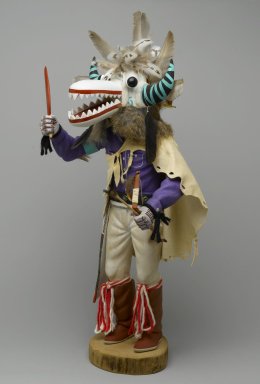
Henry Shelton (1929–2016). Kachina Doll (Nataoska), 1960–1970. Wood, paint, hide, feathers, fur, yarn, silver, wool or cotton, 22 × 9 1/2 × 9 in. (55.9 × 24.1 × 22.9 cm). Brooklyn Museum, Gift of Edith and Hershel Samuels, 2010.6.7. Creative Commons-BY (Photo: Brooklyn Museum, 2010.6.7_front_PS2.jpg)
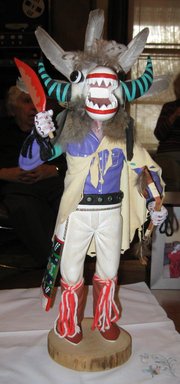
Henry Shelton (1929–2016). Kachina Doll (Nataoska), 1960–1970. Wood, paint, hide, feathers, fur, yarn, silver, wool or cotton, 22 × 9 1/2 × 9 in. (55.9 × 24.1 × 22.9 cm). Brooklyn Museum, Gift of Edith and Hershel Samuels, 2010.6.7. Creative Commons-BY (Photo: Brooklyn Museum, CUR.2010.6.7_front.jpg)
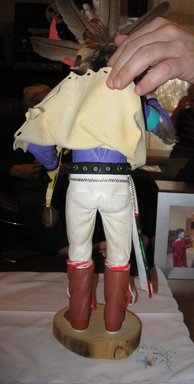
Henry Shelton (1929–2016). Kachina Doll (Nataoska), 1960–1970. Wood, paint, hide, feathers, fur, yarn, silver, wool or cotton, 22 × 9 1/2 × 9 in. (55.9 × 24.1 × 22.9 cm). Brooklyn Museum, Gift of Edith and Hershel Samuels, 2010.6.7. Creative Commons-BY (Photo: Brooklyn Museum, CUR.2010.6.7_detail2.jpg)

Henry Shelton (1929–2016). Kachina Doll (Nataoska), 1960–1970. Wood, paint, hide, feathers, fur, yarn, silver, wool or cotton, 22 × 9 1/2 × 9 in. (55.9 × 24.1 × 22.9 cm). Brooklyn Museum, Gift of Edith and Hershel Samuels, 2010.6.7. Creative Commons-BY (Photo: Brooklyn Museum, CUR.2010.6.7_detail.jpg)
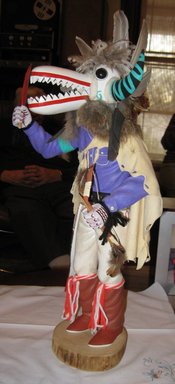
Henry Shelton (1929–2016). Kachina Doll (Nataoska), 1960–1970. Wood, paint, hide, feathers, fur, yarn, silver, wool or cotton, 22 × 9 1/2 × 9 in. (55.9 × 24.1 × 22.9 cm). Brooklyn Museum, Gift of Edith and Hershel Samuels, 2010.6.7. Creative Commons-BY (Photo: Brooklyn Museum, CUR.2010.6.7_side.jpg)

Henry Shelton (1929–2016). Kachina Doll (Nataoska), 1960–1970. Wood, paint, hide, feathers, fur, yarn, silver, wool or cotton, 22 × 9 1/2 × 9 in. (55.9 × 24.1 × 22.9 cm). Brooklyn Museum, Gift of Edith and Hershel Samuels, 2010.6.7. Creative Commons-BY (Photo: Brooklyn Museum, CUR.2010.6.7_back.jpg)
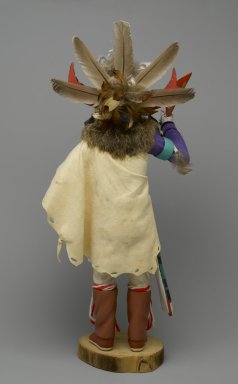
Henry Shelton (1929–2016). Kachina Doll (Nataoska), 1960–1970. Wood, paint, hide, feathers, fur, yarn, silver, wool or cotton, 22 × 9 1/2 × 9 in. (55.9 × 24.1 × 22.9 cm). Brooklyn Museum, Gift of Edith and Hershel Samuels, 2010.6.7. Creative Commons-BY (Photo: Brooklyn Museum, 2010.6.7_back_PS2.jpg)
Kachina Doll (Nataoska)
Arts of the Americas
Kachina Oötsawihazru es el Tío de un Ogro, conocido como Ogro Blanco. Estos Kachinas son un poco más pacientes que los Ogros Negros, como Chaveyo (ver Kachina Chaveyo). Ogros, llamados colectivamente Soo’so’yokto, aparecen hacia el final del Powamuya (Danza del Frijol), ceremonia realizada en febrero en la cualse les implora a los espíritus Kachinas participantes la purificación de todo lo vivo. Su rol de Ogros es asustar a la gente para que así se comporten apropiadamente y sigan las reglas.



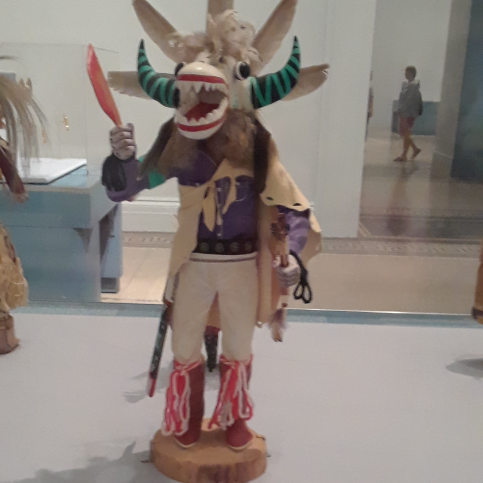
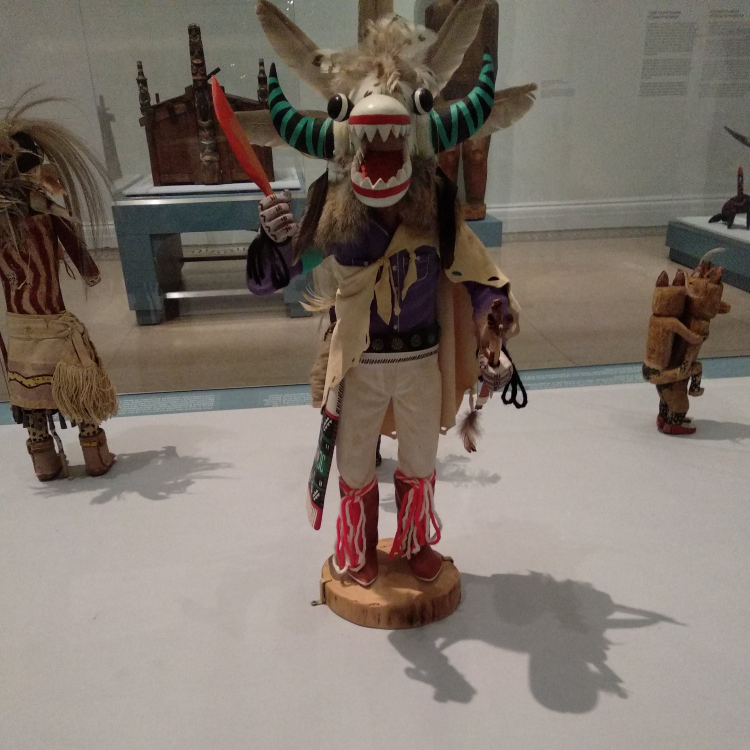
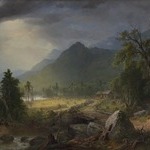

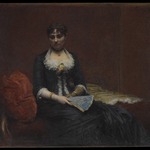
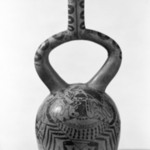

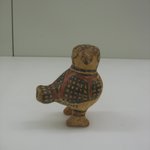

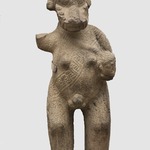
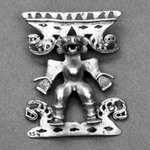
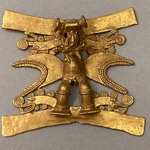
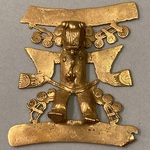
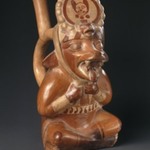

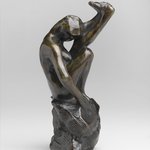
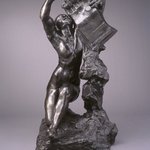
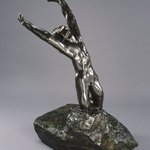
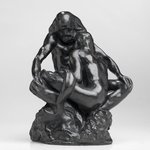

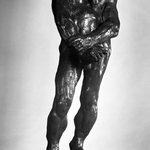
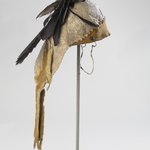
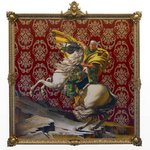

![Kachina Doll (Kwahu [Eagle])](https://d1lfxha3ugu3d4.cloudfront.net/images/opencollection/objects/size2_sq/CUR.2010.6.13.jpg)
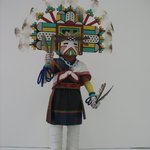
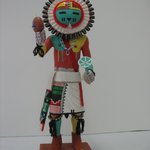
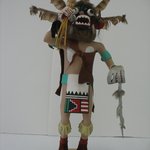
![Kachina Doll (Angwusnasomtaqa [Crow Mother])](https://d1lfxha3ugu3d4.cloudfront.net/images/opencollection/objects/size2_sq/2010.6.2_front_PS2.jpg)
![Kachina Doll (Kwahu [Eagle])](https://d1lfxha3ugu3d4.cloudfront.net/images/opencollection/objects/size2_sq/2010.6.10_front_PS2.jpg)

